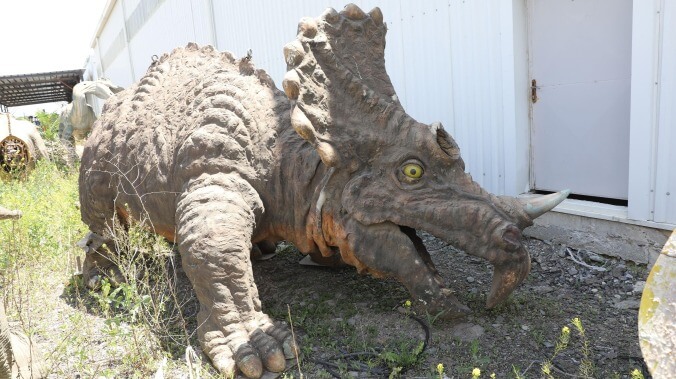Dinosaur boneyard yields eggs, skin, and maybe bits of that asteroid that killed ’em off
"Shards" from the extinction event space rock were purportedly found 2,000 miles away from the impact site
Aux Features Boneyard
Most experts agree that a six-mile-wide hunk of space debris is responsible for a particularly bad day roughly 66 million years ago. After all, there’s a crater off the Yucatán Peninsula in the Gulf of Mexico that measures around 100 miles across by 20 miles deep, and copious geologic evidence that indicates a resultant tsunami that spread from the impact site to nearly the modern Canadian border. But although we are confident the extinction level event originated far above our distant, mouse-sized mammalian relatives’ heads, there isn’t a consensus as to whether it stemmed from an asteroid, comet, or whatever QAnon folks are claiming this week—probably a time-traveling Nancy Pelosi, or something.
According to a recent New York Times report, however, we may be getting close to identifying the extraterrestrial culprit thanks to a creepy-ass dinosaur graveyard 2,000 miles away from the impact site. At a dig site in North Dakota, paleontologists claim to have uncovered debris containing “mineralogy [that] points to the presence of an asteroid” launched into the air during the asteroid/comet/Pelosi-engineered Doomsday device.
“To see a piece of the culprit is just a goose-bumpy experience,” paleontologist Robert DePalma describes in the piece.
Speaking of goosebumps, the Tanis excavation site (as it is known) contains a whole host of fossilized goodies for scientists, including a dinosaur leg so detailed it still shows skin impressions and a Pterosaur embryo indicating the flying dinosaur laid soft-shelled eggs akin to those of today’s geckos.
DePalma’s findings, although yet to be peer-reviewed, could confirm an earlier theory proposed by geochemist Frank Kyte back in 1998. Kyte, for his part, sounded surprisingly skeptical of the find. “Personally, I expect that if any meteoritic material is in this ejecta it would be extremely rare and unlikely to be found in the vast volumes of other ejecta at this site,” he told the NYT before conceding that “maybe they got lucky.”
Damn, Frank. Show a little support.
Send Great Job, Internet tips to [email protected]
4 Comments
20 miles deepI think it’s 20 km.
Like dinosaurs knew the metric system! As if!
You’re right. Such an idiot. Don’t know what the hell I was thinking.
or whatever QAnon folks are claiming this week—probably a time-traveling Nancy Pelosi, or something. Look, here’s a tip – It may be an understatement to say that most of us are a tad fatigued on politics and the past 4-6 years of lie on this planet and in this country.So maybe, juuuuust maybe, keep the “political funny hahas” out of like science shit, k? Trust me when I say that it’s not needed, is not original, and overall detracts from the actual “cool stuff” in your piece.